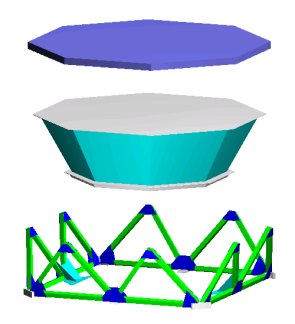Transition Radiation Detector


 At high energies, the TRD sees a small difference between an electron and a proton: At high energies, the electron will emit X-rays while crossing the detector, and the proton will not. The X-rays are generated whenever the particle crosses an "interface" - in this case, the interface between a piece of plastic and a vacuum. Each particle passes through many hundreds of interfaces when it crosses a batt of plastic cloth or felt.
At high energies, the TRD sees a small difference between an electron and a proton: At high energies, the electron will emit X-rays while crossing the detector, and the proton will not. The X-rays are generated whenever the particle crosses an "interface" - in this case, the interface between a piece of plastic and a vacuum. Each particle passes through many hundreds of interfaces when it crosses a batt of plastic cloth or felt.
The X-rays pass through the fabric, and they ionize a mixture of gases (Xenon, which is easy to ionize, and CO2, which regulates the size of the signal) in a tube with a high-voltage wire. The ionized gas experiences a little "cascade" - sort of the beginning of a spark - as the free electrons rush towards the high-voltage wire, and the result is a signal that can be read out at the end of the wire. Every particle will make a signal as it passes through, but we will look for the enhancement of the signal due to the extra transition-radiation X rays.